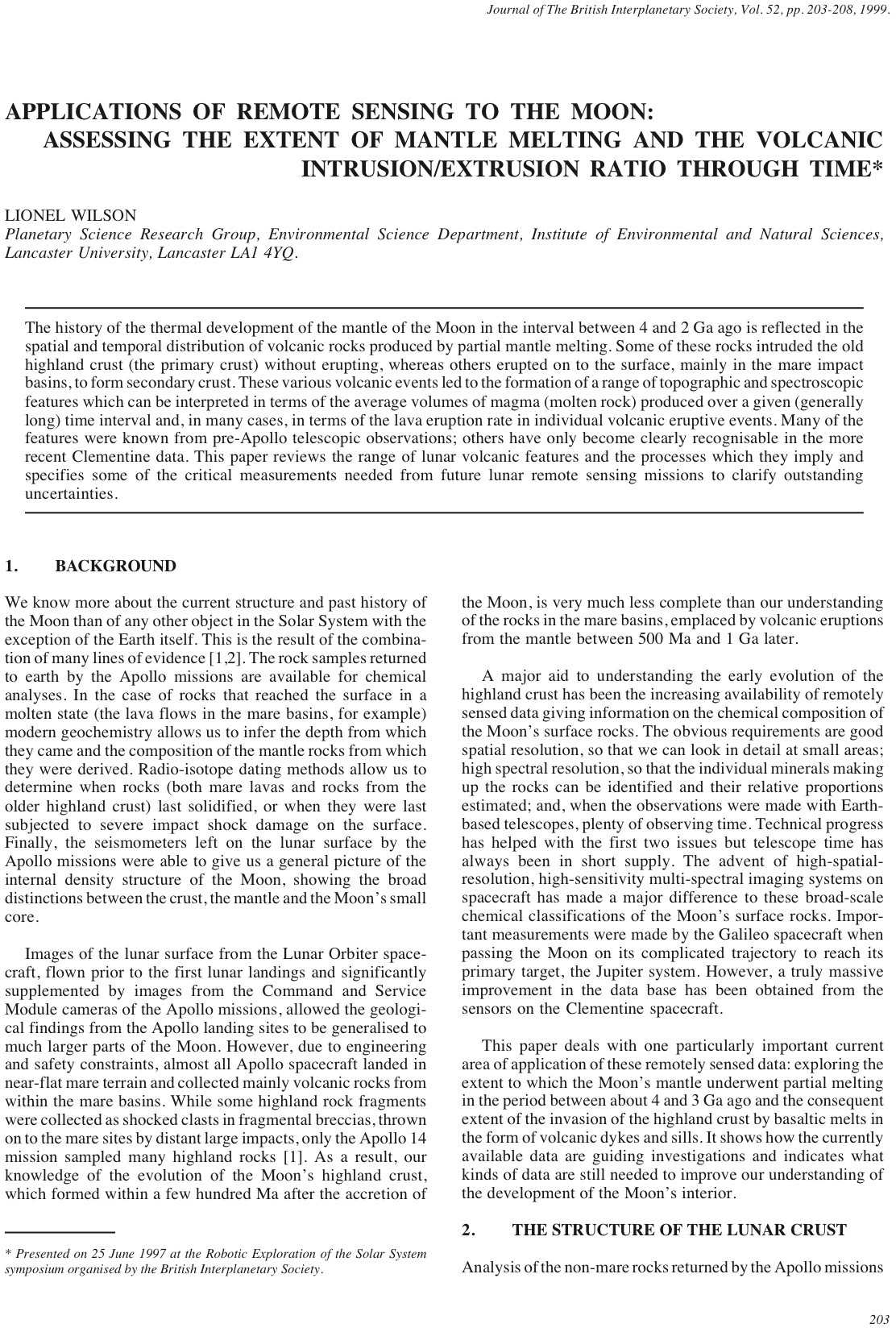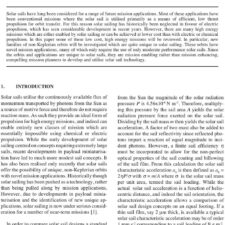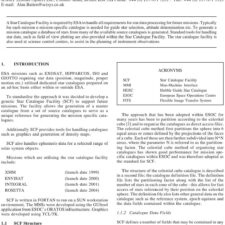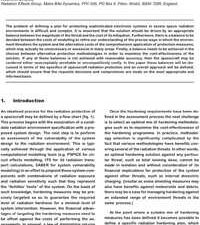Applications of Remote Sensing to the Moon – Assessing the Extent of Mantle Melting and the Volcanic Intrusion-Extrusion Ratio Through Time
£5.00
L. Wilson (1999), JBIS, 52, 203-208
Refcode: 1999.52.203
Abstract:
The history of the thermal development of the mantle of the Moon in the interval between 4 and 2 Ga ago is reflected in the spatial and temporal distribution of volcanic rocks produced by partial mantle melting. Some of these rocks intruded the old highland crust (the primary crust) without erupting, whereas others erupted on to the surface, mainly in the mare impact basins, to form secondary crust. These various volcanic events led to the formation of a range of topographic and spectroscopic features which can be interpreted in terms of the average volumes of magma (molten rock) produced over a given (generally long) time interval and, in many cases, in terms of the lava eruption rate in individual volcanic eruptive events. Many of the features were known from pre-Apollo telescopic observations; others have only become clearly recognisable in the more recent Clementine data. This paper reviews the range of lunar volcanic features and the processes which they imply and specifies some of the critical measurements needed from future lunar remote sensing missions to clarify outstanding uncertainties.





